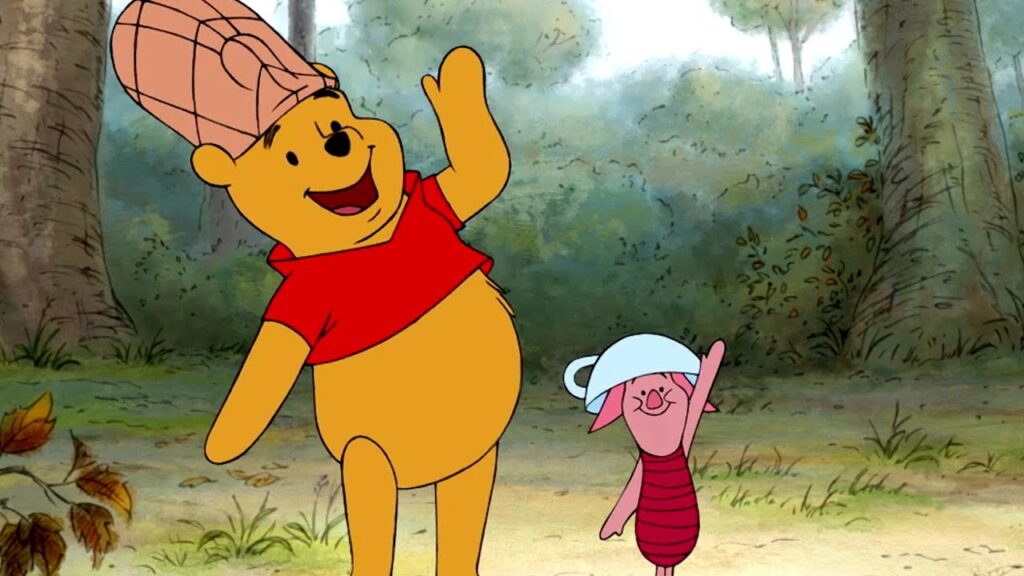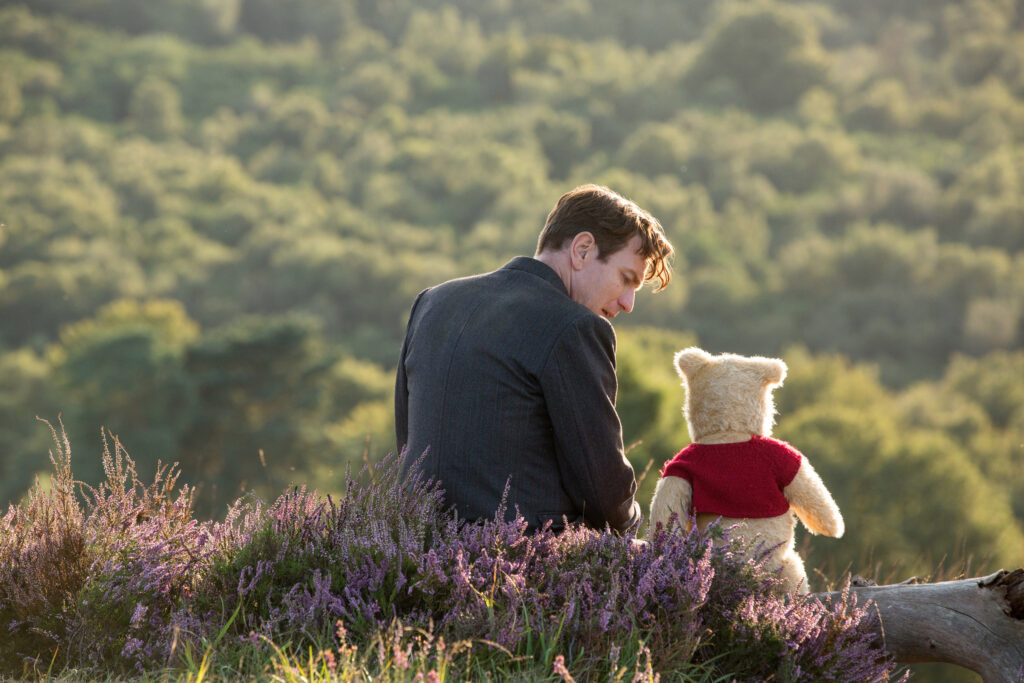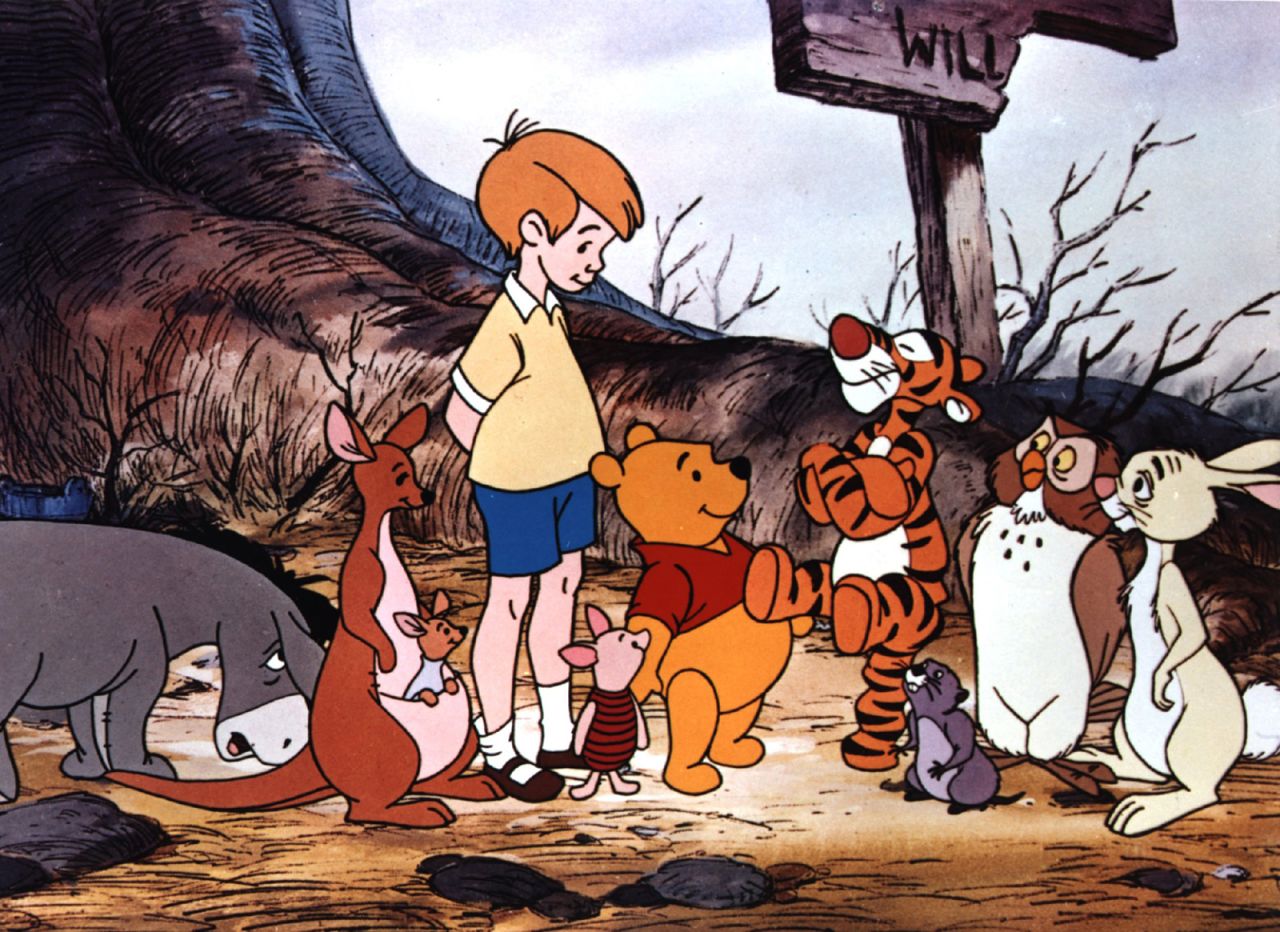First published on October 14, 1926, A. A. Milne’s Winnie the Pooh remains an all-time favorite among adults and children. The author discusses its relevance below.
In a world that often seems to rush by at a relentless pace, where the complexities of life can leave us feeling overwhelmed, a Bear of Little Brain and his motley crew of friends continue to whisper wisdom and offer solace to readers of all ages. A.A.Milne’s Winnie the Pooh might seem like a simple children’s tale on the surface, but woven into its core are refreshingly simple yet enduring insights for the young and those young at heart – resonating as powerfully today as they did when it was first published in 1926.
Winnie the Pooh by A.A.Milne features a delightfully diverse range of characters, with adorable, and now classic, illustrations by E. H. Shepard. There is the honey-loving bear Winnie the Pooh, his loyal little companion Piglet, the energetic tiger Tigger, the doleful donkey Eeyore, Rabbit the practical planner, the wise Owl, Kanga and Roo, and Christopher Robin, the young boy who anchors all their lives adventures within the Hundred Acre Wood.
Each of Milne’s characters own their unique personalities, quirks and all. This could, perhaps, be the reason why their varied natures endure as a beacon of timeless relevance. For these stuffed animals experience no lesser emotions than us – and if we look closely, we might find a companion to hold onto.
Winnie the Pooh
Edward Bear, Pooh Bear, Winnie-the-Pooh, F.O.P. (Friend of Piglet’s), R.C. (Rabbit’s Companion), P.D. (Pole Discoverer), E.C. and T.F. (Eeyore’s Comforter and Tail-finder) is the honey-loving Bear of Very Little Brain who is also often the central character of the stories. Known for his positively friendly demeanor, he isn’t the smartest of the group, but certainly the kindest.
With a willingness to do anything for his friends, Pooh embodies the innocence and simplicity of childhood and its unburdened joys. His love for honey is also a reminder to savor life’s simple pleasures, teaching us that we cannot give to others if we do not stop to replenish ourselves first with some honey. Pooh’s forgetful nature could also be a lesson in mindfulness – he lives in the present moment without the past or future clouding his experiences, reminding us to fully engage in the here and now. As Christopher Robin fondly calls him, this ‘silly old bear’ is undoubtedly the most simple and optimistic of the lot, approaching life imperfectly with a heart as big as his jar of honey. Or is it really? We can never tell with this one.
Also Read: Winnie-The-Pooh: Blood and Honey (2023) Movie Ending, Explained
Piglet

Pooh’s constant mate, the intelligent little Piglet, provides the reason for Pooh’s rhymes. Despite anxiety about his tiny stature and accompanying helplessness, Piglet tries to be brave, sometimes resulting in comical mishaps. His cautious approach contrasts Pooh’s reckless abandon, but his analytical nature reminds us that observing a situation’s ins and outs can help us better grip it.
Nevertheless, despite his small size and timid nature, he is a symbol of quiet bravery. He reminds us that our fears can be faced with the support of the right people. Grandson of the old Trespassers William, his willingness to confront his fears, no matter how daunting, is a reminder that courage isn’t always loud. It can be a whisper in the face of a storm. With his quietly heartfelt gestures, Piglet underscores the idea that the little things we do for others can make the biggest difference – even if we are little ourselves.
Tigger
Tigger is an energetic tiger who loves to bounce on his springy tail. A manifestation of unbridled enthusiasm and boundless energy, Tigger teaches us to embrace and celebrate our unique qualities with infectious zeal. His catchphrase, ‘T-T-F-N: Ta-Ta For Now!’ reflects his impulsively carefree nature, which can sometimes overwhelm others and reminds us to strike a balance between our enthusiasm and consideration for others. However, he is unabashedly himself, and his character teaches us to celebrate our individuality. His bouncing and whooping remind us that sometimes, the best way to tackle life’s challenges is to bounce right over them.
Eeyore
The melancholic and downcast donkey, Eeyore, is known for his gloomily distinctive, slow and deliberate way of speaking. His sadness teaches us the importance of acknowledging and accepting our emotions, demonstrating that it’s okay to feel down at times and that we should give ourselves permission to experience and express our feelings with our loved ones.
A frequent doubter of his worth and abilities, his character serves as a reminder to combat self-doubt and negative self-talk. Eeyore’s friends treat him with patient understanding, highlighting the importance of the same when dealing with people experiencing challenging times or depression. Nevertheless, despite his sadness, Eeyore makes an effort to partake in adventures with his friends, showing us that resilience isn’t always about maintaining a cheerful disposition but about continuing to move forward, even in difficult times. As he rightly observes, ‘A little Consideration, a little Thought for Others, makes all the difference.’
Christopher Robin

Although not one of the animals himself, Christopher Robin is the human friend who brings the animals of the Hundred Acre Wood to life with his imagination. He is a kind, loving boy, attentive to the diverse needs of all his friends – each as quirky as the other – underscoring the idea that true friendship knows no bounds and can exist despite differences in personalities and perspectives. He plays a pivotal role in the stories by organizing the group’s adventures and being a reliable source of support for all the lovable characters we encountered thus far. His imagination serves as the conduit between the real world and the fantastical world of the Hundred Acre Wood, reminding us of the power of creativity and encouraging us to nurture our imagination and keep our inner child alive by adding a touch of enchantment to the ordinary.
Also Read: The Tonal Difference between Peter Rabbit [2018] and Christopher Robin [2018]
Rabbit
Rabbit is the practical, witty, and adaptable one of the group, sometimes bossy but always there to help with resourceful solutions when his friends get themselves into a predicament. A testament to the power of organization and planning, his meticulous nature is a reminder that there is a place for structure and order even in the most whimsical of adventures. Because often, a well-thought-out plan can save the day.
Owl
Owl is the wise and knowledgeable character in the Hundred Acre Wood. Well-respected by everyone in the group, he enjoys imparting wisdom through stories and often offers advice with a penchant for long words. Whether he knows the spelling is a different matter. And although his advice might not always be as helpful as he intends, he tries. For instance, a ‘Customary Procedure’ can easily be mistaken for ‘Crustimoney Proseedcake’, and could we blame dear Pooh for it?
Kanga and Roo
Kanga is a gentle and motherly kangaroo, and Roo is her energetic and curious joey. While Kanga is nurturing and caring, she strikes a balance between being a responsible mother and allowing Roo to have adventures and play with his friends. Their characters underscore the importance of balancing responsibility and the freedom to explore and have fun. The relationship between Kanga and Roo symbolizes the enduring love and support that parents and caregivers provide, even in the face of challenging moments.
In Winnie the Pooh, the characters are more than just stuffed animals come to life – they are timeless embodiments of various qualities and life lessons. These characters each bring their unique personalities and quirks to the stories, and their interactions and relationships are at the heart of the charm of Winnie the Pooh. Their adventures are a refreshingly simple take on the importance of friendship, the beauty of simple pleasures, the courage to face our fears, and the wisdom to accept ourselves and others as we are, offering us a lens through which to view the world with childlike wonder, appreciating the simple, everyday joys of life. And in these delightful stories, we find comfort, which, no matter how old we grow, rekindles the gentle tug at our hearts like the first time we ventured into the Hundred Acre Wood with A.A.Milne’s enchanting words.

